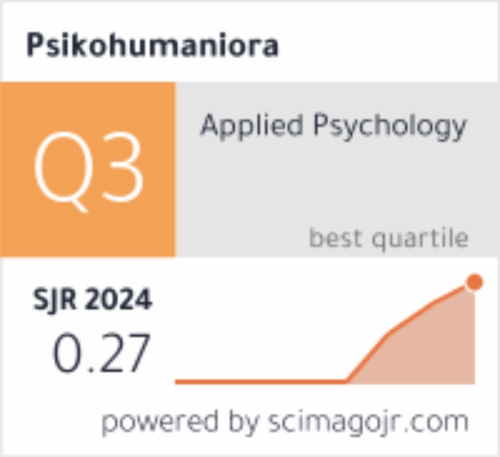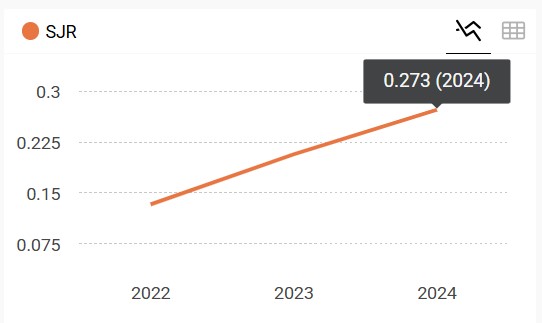What Millennials Want: How to Optimize Their Work
DOI:
https://doi.org/10.21580/pjpp.v3i1.2489Keywords:
millenials, job autonomy, boredom at work, work engagementAbstract
Abstract: It is known that it is quite difficult for companies to create a working environment that suits the characters of the Millennials, who are now undoubtedly make up the largest proportion of the workforce. This study aims to understand how job autonomy and boredom at work affect Millennials’ work engagement. Using non-probability sampling methods, 320 Millennial employees (19–37 years old) from various organizations (private and public organization) in Indonesia agreed to participate in this study. They filled in a questionnaire that measured the Utrecht Work Engagement Scale (UWES-9), Work Design Questionnaire (WDQ); and Workplace Boredom Scale. Data were analyzed using mediation analysis; and the results showed that boredom at work plays a significant role in mediating the relationship between job autonomy and employee engagement in Millennial employees. To conclude, job autonomy positively affects boredom levels of Millennial employees and low levels of boredom results in a higher employee engagement level.
Abstrak: Dapat dipahami bahwa perusahaan kesulitan menciptakan lingkungan kerja yang sesuai bagi karyawan-karyawannya, khususnya karyawan Generasi Milenial yang merupakan pemain utama dalam dunia kerja. Tujuan penelitian ini adalah untuk melihat peran dari variabel-variabel yang diduga dapat mempengaruhi keterikatan kerja karyawan Generasi Milenial, yaitu kemandirian kerja dan kebosanan bekerja. Menggunakan metode non-probability sampling, 320 karyawan Generasi Milenial (19-37 tahun) dari berbagai organisasi di Indonesia (organisasi swasta dan negeri) bersedia berpartisipasi dalam penelitian ini. Mereka mengisi beberapa kuesioner, antara lain The Utrecht Work Engagement Scale (UWES-9) Work Design Questionnaire dan Workplace Boredom Scale. Analisis data yang digunakan adalah analisis mediasi; dan hasilnya menunjukkan bahwa kebosanan bekerja berperan signifikan dalam memediasi hubungan kemandiran kerja dan keterikatan kerja pada karyawan Generasi Milenial. Dapat disimpulkan bahwa kemandirian kerja dapat mempengaruhi kebosanan Generasi Milenial dalam bekerja dan rendahnya tingkat kebosanan dalam bekerja tersebut dapat mempengaruhi keterikatan kerja yang dimiliki.
Downloads
References
Akram, A., Ali, M., & Hassaan, M. (2013). Impact of job autonomy on work engagement: The mediating role of job crafting in universities of Pakistan. International Journal of Management Sciences and Business Research, 3(1), 31–44. Retrieved from http://www.ijmsbr.com/Volume%203,%20Issue%201%20Paper%204.pdf
Anitha, J., & Aruna, M. (2016). Enablers of employee engagement of Gen Y at the workplace with reference to automobile sector. Amity Journal of Training and Development, 1(1), 93– 108. Retrieved from http://amity.edu/UserFiles/admaa/248Paper 7.pdf
Aon Empower Results. (2013). 2013 Trends in global employee engagement. https://doi.org/10.1093/fampra/cms084
Avey, J. B., Luthans, F., Smith, R. M., & Palmer, N. F. (2010). Impact of positive psychological capital on employee well-being over time. Journal of Occupational Health Psychology, 15(1), 17–28. https://doi.org/10.1037/a0016998
Bakker, A. B., Demerouti, E., & Schaufeli, W. B. (2005). The crossover of burnout and work engagement among working couples. Human Relations, 58(5), 661–689. https://doi.org/10.1177/0018726705055967
Bakker, A. B., & Leiter, M. P. (Eds.). (2010). Work Engagement: A Handbook of Essential Theory and Research. New York: Psychology Press.
Bates, S. (2004). Getting engaged. HR Magazine, 44–51.
Csikszentmihalyi, M. (1990). Beyond boredom and anxiety. San Fransisco: Jossey-Bass.
Deci, E. L., & Ryan, R. M. (2000). The “what” and “why” of goal pursuits: Human needs and the self-determination of behavior. Psychological Inquiry, 11(4), 227–268. https://doi.org/10.1207/S15327965PLI1104_01
Eisenberger, R., Rhoades, L., & Cameron, J. (1999). Does pay for performance increase or decrease perceived self-determination and intrinsic motivation? Journal of Personality and Social Psychology, 77(5), 1026–1040. https://doi.org/10.1037/0022-3514.77.5.1026
Ersoy, N. C., Born, M. P., Derous, E., & Molen, H. T. van der. (2012). The effect of cultural orientation and leadership style on self‐ versus other‐oriented organizational citizenship behaviour in Turkey and the Netherlands. Asian Journal of Social Psychology, 15(4), 249– 260. https://doi.org/10.1111/j.1467-839X.2012.01380.x
Etikan, I., Musa, S. A., & Alkassim, R. S. (2016). Comparison of convenience sampling and purposive sampling. American Journal of Theoretical and Applied Statistics, 5(1), 1–4. https://doi.org/10.11648/j.ajtas.20160501.11
Fisheri, C. D. (1993). Boredom at work: A neglected concept. Human Relations, 46, 395–417. https://doi.org/10.1177/001872679304600305
Gallup Consulting. (2008). Employee engagement: What’s your engagement ratio? Washington DC.: Gallup Consulting.
Gravett, L., & Throckmorton, R. (2007). Bridging the generation gap. How to get radio babies, boomers, gen xers, and gen yers to work together and achieve more. New York: Career Press.
Hackman, J. R., & Oldham, G. R. (1976). Motivation through the design of work: test of a theory. Organizational Behavior and Human Performance, 16(2), 250–279. https://doi.org/10.1016/0030-5073(76)90016-7
Harter, J. K., Schmidt, F. L., & Keyes, M. (2003). Flourishing: The positive person and the good life as well as well-being in the Workplace and its relationship to business outcomes. A Review of the Gallup Studies, 9, 205–224.
Hoole, C., & Bonnema, J. (2015). Work engagement and meaningful work across generational cohorts. SA Journal of Human Resource Management, 13(1), 1–11. https://doi.org/ 10.4102/sajhrm.v13i1.681
Hoskins, D. (2014). Employees perform better when they can control their space. Retrieved February 11, 2018, from https://hbr.org/2014/01/employees-perform-better-when-they-can-control-their-space
Kahn, W. A. (1990). Psychological conditions of personal engagement and disengagement at work. Academy of Management Journal, 33(4), 692–724. https://doi.org/10.2307/256287
Kanfer, R. (1990). Motivation theory and industrial/organizational psychology. In M. D. Dunnette & L. M. Hough (Eds.), Handbook of industrial and organizational psychology (pp. 75–170). California: Consulting Psychologists Press.
Kultalahti, S., & Viitala, R. L. (2014). Sufficient challenges and a weekend ahead – Generation Y describing motivation at work. Journal of Organizational Change Management, 27(4), 569– 582.
Lee, T. W. (1986). Toward the development and validation of a measure of job boredom. Manhattan College Journal of Business, 15, 22–28.
Levin, K. A. (2006). Study design III: Cross-sectional studies. Evidence-Based Dentistry, 7(1), 24–25. https://doi.org/10.1038/sj.ebd.6400375
Liyanage, H. M., & Gamage, P. (2017). Factors influencing the employee engagement of the generation Y employees. In Proceedings of APIIT Business & Technology Conference. Colombo.
Loukidou, L., Loan‐Clarke, J., & Daniels, K. (2009). Boredom in the workplace: More than monotonous tasks. International Journal of Management Reviews, 11(4). https://doi.org/ 10.1111/j.1468-2370.2009.00267.x
Lowe, D., Levitt, K., & Wilson, T. (2008). Solutions for retaining generation Y employees in the workplace. Business Renaissance Quarterly, 3(3), 43–57.
Lu, J. G., Brockner, J., Vardi, Y., & Weitz, E. (2017). The dark side of experiencing job autonomy: Unethical behavior. Journal of Experimental Social Psychology, 73(May), 222– 234. https://doi.org/10.1016/j.jesp.2017.05.007
Marisa, S., Sonia, A., & María, P. J. (2005). Linking organizational resources and work engagement to employee performance and customer loyalty: The mediation of service climate. Journal of Applied Psychology, 90(6), 1217–1227.
Martin, C. A. (2005). From high maintenance to high productivity. Industrial and Commercial Training, 37(1), 39–44. https://doi.org/10.1108/00197850510699965
Maslach, C. (1998). A multidimensional theory of burnout. In C. L. Cooper (Ed.), Theories of organizational stress (pp. 68–85). Oxford: Oxford University Press.
Maurer. (2013). Employee engagement high in Sub-Saharan Africa. Retrieved February 13, 2013, from http://www.shrm.org/hrdisciplines/global/articles/ pages/employee-engagement-high-africa.aspx
Metin, U. B., Taris, T. W., & Peeters, M. C. W. (2016). Measuring procrastination at work and its associated workplace aspects. Personality and Individual Differences, 101, 254–263. https://doi.org/10.1016/j.paid.2016.06.006
Morgeson, F. P., & Humphrey, S. E. (2006). The Work Design Questionnaire (WDQ): Developing and validating a comprehensive measure for assessing job design and the nature of work. Journal of Applied Psychology, 91(6), 1321–1339. https://doi.org/ 10.1037/0021-9010.91.6.1321
Naughton, T. J. (1998). Jobs which augment or deplete human energy. Social Science Research, 72, 129–135.
Obi-Nwosu, H., O, J.-A. C., & Tochukwu, O. (2013). Job Characteristics as predictors of organizational commitment among private sector workers in Anambra State, Nigeria. International Journal of Asian Social Science, 3(2), 482–491.
Ohly, S., Sonnentag, S., & Pluntke, F. (2006). Routinization, work characteristics and their relationships with creative and proactive behaviors. Journal of Organizational Behavior, 27(3), 257–279. https://doi.org/10.1002/job.376
Parker, S. K., & Ohly, S. (2006). Designing motivating work. In R. Kanfer, G. Chen, & R. Pritchard (Eds.), Work motivation: Past, Present and Future. Mahwah, NJ: Lawrence Erlbaum.
Podsakoff, P. M., MacKenzie, S. B., Lee, J. Y., & Podsakoff, N. P. (2003). Common method biases in behavioral research: A Critical review of the literature and recommended remedies. Journal of Applied Psychology, 88(5), 879–903. https://doi.org/10.1037/0021-9010.88.5.879
Reijseger, G., Schaufeli, W. B., Peeters, M. C. W., & Taris, T. W. (2012). Ready, set, go! From work engagement to job performance. In S. P. Gonçalves (Ed.), Occupational health psychology: From burnout to well-being. London: Scientific & Academic Publishing Co.
Sa’aban, S., Ismail, N., & Mansor, M. F. (2013). A study of generation Y behavior at workplace. In International conference on business innovation, entrepreneurship, and engineering. Penang.
Schaufeli, W. B., & Bakker, A. B. (2003). UWES Utrecht Work Engagement Scale: Test manual. Utrecht: Department of Psychology, Utrecht University.
Schaufeli, W. B., Taris, T. W., & Van Rhenen, W. (2008). Workaholism, burnout, and work engagement: Three of a kind or three different kinds of employee well-being? Applied Psychology, 57(2), 173–203. https://doi.org/10.1111/j.1464-0597.2007.00285.x
Spector, P. E. (1986). Perceived control by employees: A meta-analysis of studies concerning autonomy and participation at work. Human Relations, 39(11), 1005–1016. https://doi.org/10.1177/001872678603901104
Sugiyono. (2009). Metode Penelitian bisnis (Pendekatan kuantitatif, kualitatif, dan R&D). Bandung: Alfabeta.
Twenge, J. M., & Campbell, S. M. (2008). Generational differences in psychological traits and their impact on the workplace. Journal of Managerial Psychology, 23(8), 862–877. https://doi.org/10.1108/02683940810904367
Van Den Broeck, A., Vansteenkiste, M., De Witte, H., & Lens, W. (2008). Explaining the relationships between job characteristics, burnout, and engagement: The role of basic psychological need satisfaction. Work and Stress, 22(3), 277–294. https://doi.org/10.1080/02678370802393672
van der Heijden, G. A. H., Schepers, J. J. L., & Nijssen, E. J. (2012). Understanding workplace boredom among white collar employees: Temporary reactions and individual differences. European Journal of Work and Organizational Psychology, 21(3), 349–375. https://doi.org/10.1080/1359432X.2011.578824
Veldhoven, M. Van, Meijman, T. F., Broersen, J. P. J., & Fortuin, R. J. (1997). Research into the experiences of psychosocial workload and strain with the questionnaire experiencing and evaluation of work. Amsterdam: Stichting Kwaliteitsbevordering Bedrijfsgezondheid.
Warr, P., & Inceoglu, I. (2012). Job engagement, job satisfaction, and contrasting associations with person–job fit. Journal of Occupational Health Psychology, 17(2), 129–138. https://doi.org/10.1037/a0026859
Whiteoak, J. W. (2014). Predicting boredom-coping at work. Personnel Review, 43(5), 741-763. https://doi.org/10.1108/PR-09-2012-0161
Downloads
Published
How to Cite
Issue
Section
License
The copyright of the accepted article shall be assigned to the publisher of the journal. The intended copyright includes the right to publish the article in various forms (including reprints). The journal maintains the publishing rights to published articles.
In line with the license, authors and any users (readers and other researchers) are allowed to share and adapt the material only for non-commercial purposes. In addition, the material must be given appropriate credit, provided with a link to the license, and indicated if changes were made. If authors remix, transform, or build upon the material, authors must distribute their contributions under the same license as the original.




